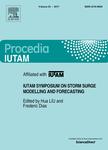版权所有:内蒙古大学图书馆 技术提供:维普资讯• 智图
内蒙古自治区呼和浩特市赛罕区大学西街235号 邮编: 010021

作者机构:Department of Mechanical Engineering Kagoshima University 1-21-40 Korimoto Kagoshima 890-0065 Japan Department of Bioengineering and Robotics Tohoku University 6-6-01 Aoba-yama Sendai 980-8579 Japan Department of Mechanical Engineering Sendai National College of Technology 48 Nodayama Natori 981-1239 Japan Department of Otorhinolaryngology Head and Neck Surgery Tohoku University Graduate School of Medicine Sendai 980-8574 Japan Audiology Department Townsville Hospital and Health Service Douglas 4814 Queensland Australia Hearing Research Unit for Children School of Health and Rehabilitation Sciences University of Queensland Brisbane 4072 Queensland Australia Department of ENT Townsville Hospital and Health Service Douglas 4814 Queensland Australia Department of Otorhinolaryngology Japanese Red Cross Sendai Hospital 2-43-3 Yagi-yama Honcho Sendai 982-8501 Japan Department of Otolaryngology and Center of Otologic Surgery Sen-en Rifu Hospital 2-2-108 Aoba-dai Rifu 981-0133 Japan Department of Intelligent Information Systems Faculty of Science and Technology Tohoku Bunka Gakuen University 6-45-1 Kunimi Sendai 981-8551 Japan
出 版 物:《Procedia IUTAM》
年 卷 期:2017年第24卷
页 面:5-14页
学科分类:08[工学] 0801[工学-力学(可授工学、理学学位)]
主 题:Neonates Middle ear External ear canal wall Conventional tympanometry 226 Hz High-frequency tympanometry 1,000 Hz Sweep frequency impedance (SFI) meter
摘 要:Conventional 226-Hz tympanometry has been acknowledged as a reliable method for detecting middle ear dysfunction in adults and children. However, its application has proved to be inaccurate in neonates younger than 7 months of age. In the present study, therefore, tympanograms of neonates were derived based on sweep frequency impedance (SFI) data and an attempt was made to investigate the reason why conventional tympanometry is inadequate for neonates. Analysis of neonatal tympanograms revealed that the application of a conventional 226-Hz probe tone leads to either a type A or a type M tympanogram. This is possibly due to the intrinsic oscillatory behavior of the external ear canal wall caused by its resonance at around 226 Hz.